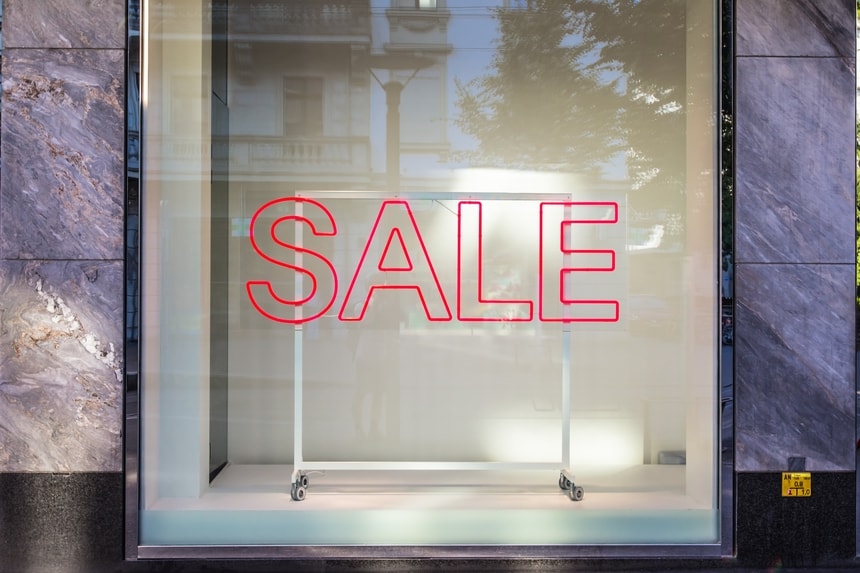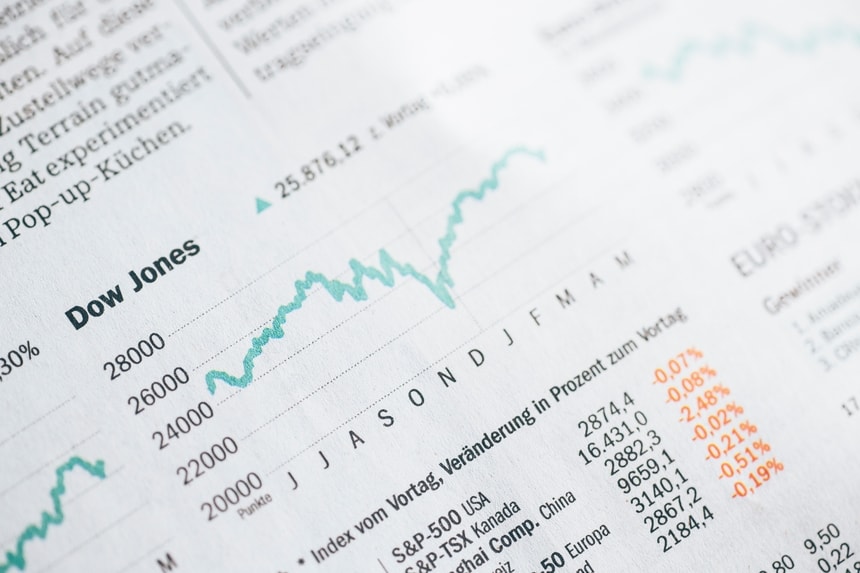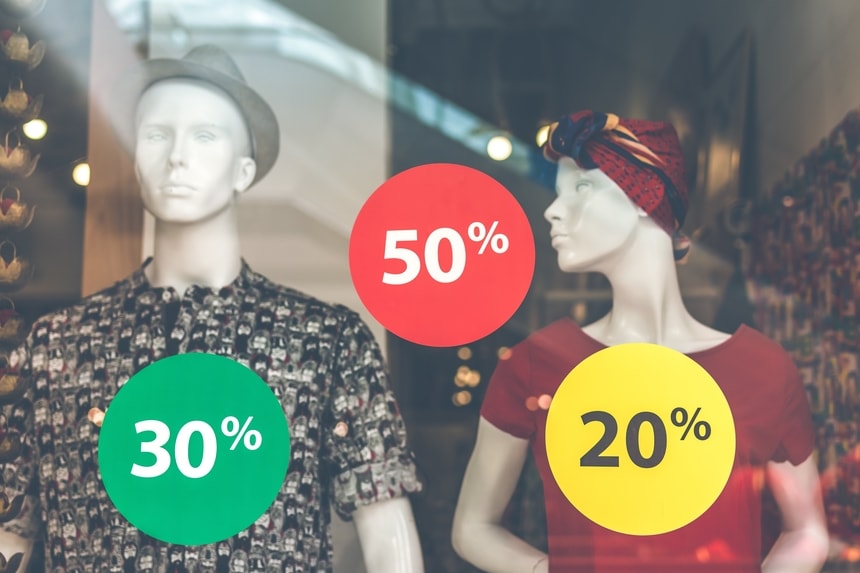Table of Contents
For decades, Black Friday, the day after Thanksgiving, has been one of the most important retail events in the United States. According to the National Retail Federation, a record 189.6 million U.S. consumers shopped over this year’s Thanksgiving weekend. That’s an increase of 14% over last year’s 165.8 million. Although many U.S. consumers continue to start their Christmas shopping earlier in the year, there are millions who shift into high gear from Black Friday to Cyber Monday (the Monday following the Thanksgiving weekend). Some do so in hopes of scoring major discounts on holiday gifts and décor while for others, it’s sort of a tradition. Whatever the reason, the popularity of Thanksgiving weekend shopping is going strong. As retailers continue to compete for holiday sales, the frenzy that is Black Friday appears to still matter. But, the term “Black Friday” wasn’t always associated with shopping or the day after Thanksgiving.

The day after Thanksgiving has been the unofficial beginning of the Christmas season since the late 1800s when President Abraham Lincoln designated Thanksgiving as the last Thursday in November. However, the day after Thanksgiving wasn’t called “Black Friday” then. Instead, the term was associated with September 24, 1869 (the Panic of 1869) when two financiers, Jay Gould and James Fisk, took advantage of their connections with the Grant Administration and attempted to corner the gold market. When President Grant became aware of this, he ordered the Treasury to release a large supply of gold, which halted their run and caused prices to drop by 18%. Fortunes were made and lost in a single day. Once gold prices had dropped by 20%, the stock market crashed. Subsequently, commodity prices dropped by 50%.
In the late 1800s and early 1900s, department stores began to sponsor Thanksgiving Day parades. Eaton’s Toronto Santa Claus Parade inspired Macy’s Department Store to launch its famous Macy’s Thanksgiving Day Parade in New York City. Macy’s was the first to use the parade as an advertising medium to boost shopping on the following day. There was an unwritten rule among the stores that they wouldn’t advertise holiday sales before the day of their parades. Therefore, the day after Thanksgiving officially kicked off the Christmas shopping season.
Throughout the 1930s, the day after Thanksgiving became increasingly popular as the first official shopping day of the Christmas season. During the Great Depression, however, retailers still experienced financial loss. In 1939, Thanksgiving Day was to fall during the fifth week of November. Retailers petitioned President Franklin D. Roosevelt to move the holiday up to the fourth week, warning that the shorter shopping season would cause them to go bankrupt. In an answer to the retailers’ concerns, President Roosevelt issued a presidential proclamation which officially moved Thanksgiving up to the fourth Thursday in November rather than the last Thursday, in hopes that the sales would boost the U.S. economy. Unfortunately, by the time this took place, it was late October. Most people adopted the President’s proclamation, which was later reinforced by Congress, but there were others who already had plans and proceeded with celebrating Thanksgiving on the traditional date. Unhappy with the President’s date change, they referred to the new date as “Franksgiving”.
Only twenty-five states adopted the President’s proclamation, with Texas and Colorado celebrating Thanksgiving Day on both the old and new dates. This caused companies in those two states to give their employees the day off on both dates. In 1941, Congress put an end to the chaos and passed a law that proclaimed Thanksgiving Day would always be on the fourth Thursday in November.
The earliest known use of the term “Black Friday” to refer to the day after Thanksgiving started in the 1950s. People began calling in sick the day after Thanksgiving in order to have a four-day weekend. Since stores were open, those who called in sick were able to get a jump on their holiday shopping. Many employers started to add that day as another paid holiday.
In the 1960s, the terms “Black Friday” and “Black Saturday” were used by Philadelphia police to describe the traffic jams, accidents, and sometimes violence that occurred on the two days following Thanksgiving as a result of congestion in the downtown shopping areas.

Retailers weren’t pleased with the negative connotations being put on what, for them, was one of the most profitable days of the year. The media had often used the word “black” with a day of the week to refer to a negative event. For example, October 24, 1929 was referred to as “Black Thursday” because it’s the day the Great Depression officially started. The following Tuesday, the stock market fell by 12% and destroyed investors’ confidence in the stock market. Those who had invested their life savings lost everything. That day was referred to as “Black Tuesday”.
Retailers wanted to change the negative connotations of Black Friday by associating it with accountants’ use of black ink to indicate profit when recording entries in a company’s books. In contrast, red ink is used to convey loss.
So, “Black Friday” came to be associated with profitability in the retail industry and in the economy. Retailers started to use the term to indicate a successful sales day. To encourage shopping on the day following Thanksgiving Day, retailers offered substantial discounts available on that day only.
Today, millions of Americans brave the Black Friday crowds in search of the best deals. Many retailers have started to extend their sales throughout the weekend, wrapping up with online-only offers on Cyber Monday.

Traditionally, Black Friday is the shopping day on which many retailers have sold enough merchandise to put them “in the black” for the year. Since these retailers consider Black Friday sales to be pivotal to their business’s annual revenue, some investors gauge the health of the entire retail industry on Black Friday sales numbers.
Before every holiday shopping season, experts in the retail market make predictions about Black Friday sales figures. Investors pay close attention to the actual sales figures. Whether the expected sales figures are met or surpassed may affect investor confidence. If consumer spending is strong on Black Friday, retailers are likely to report increased sales which in turn may give investors confidence that the remainder of the shopping season will be profitable. Investors’ confidence will be reflected in increased trading activity and rising stock prices for retailers who post strong sales. The stock market can also be affected by having extra days off for Thanksgiving. The markets also tend to see increased trading activity and higher returns the day before a holiday or a long weekend. This is known as the holiday effect or the weekend effect. Many investors hope to capitalize on this seasonal phenomenon.
On the other hand, if a retailer isn’t able to live up to forecasters’ estimates, investors will shy away from that retailer and its stock prices will start to trend downward. If consumers/investors rein in their spending/investing, concern over the health of the economy as a whole is amplified. Therefore, the events of Black Friday are considered to be an indicator of the financial markets.
While shopping for Thanksgiving Day is big business, especially for the food industry, it’s unlikely that the stock market is affected by this activity.
When it comes to Black Friday’s impact on retailers’ fourth-quarter sales and profitability figures, analysts don’t feel there is any real impact. The analysts instead feel that any gains or losses realized from Black Friday sales are short-term. In 2008, financial expert Mark Hulbert performed an analysis of 114 years of market trading to see if there was any correlation between market performance on the Friday and Monday following Thanksgiving and the remainder of the year. His findings? There was no positive correlation.
In the years immediately preceding 2008, the market for the remainder of the year had performed the opposite of the Friday and Monday following Thanksgiving. When stock prices were up on those days, they were typically down for the remainder of the year.
When looking at Black Friday as an indicator for the markets, there are other factors to consider. Retailers didn’t always discount for the holidays as deeply as they do now. So, a retailer’s strong sales numbers on Black Friday may not translate to profitability. Also, Cyber Monday is becoming an equally important standard. Cyber Monday deals are offered to catch those shoppers who chose not to brave the Black Friday crowds or unfavorable weather conditions. Whatever the reason, consumers increasingly place online orders on this day.
If you want to know in which direction the market is headed, Black Friday may not be the best indicator. Black Friday performance can’t change the direction of the market by itself. Investors should trade cautiously during this time and not follow the trends in post-Thanksgiving retail sales. The National Retail Federation also warns that uncertainty around trade, interest rates, global risk factors, and political developments could impact overall stock market sentiment.

According to a recent Bank of America Merrill Lynch (BAML) note, there are two trends impacting holiday sales and detracting from Black Friday. Consumers are taking advantage of early promotions and starting their holiday shopping well before Black Friday. The early shopping period is defined by BAML analysts as the twenty-one days that end with Black Friday. During this period sales have increased by 2.2% year-over-year since 2013. The analysts also used time stamps on debit cards used at physical stores to track the timing of Thanksgiving afternoon/evening and Black Friday sales and found that spending was spread evenly throughout the two days.
Consumers are also doing more of their shopping online instead of visiting retail stores. Online shopping made up 38% of early holiday sales this year, up from 21% in 2010. Shopping from a retailer’s website is an easier way to find promotions so online shopping is expected to increase 14% each year while retail store revenue is only expected to increase by 2%.
In a survey focused on the planned timing of holiday shopping, 30% of respondents said they planned to do most of their holiday shopping in early December. Only 19% said they planned to shop during Black Friday and Thanksgiving weekend.
These findings indicate that consumers aren’t focusing on Black Friday as much as before, but what about the strong sales numbers and marked increase in the number of Black Friday shoppers from 2018 to 2019?
During the 2018 holiday shopping season, U.S. consumers spent $6.2 billion on Black Friday and $7.9 billion on Cyber Monday. This represented an increase from the previous year of 23.6% and 19.7%, respectively. Should retailers be happy with these figures? Not necessarily.
Retailers should look at the long-term benefits or drawbacks of offering deep discounts to all customers, including those who make low-margin purchases and only shop with them on Black Friday. Is it worth the extra hours, extra pay, and hassles involved in orchestrating and managing such a mammoth shopping event?
Some feel that Black Friday should either be eliminated altogether or reimagined so that it focuses on strengthening relationships with loyal customers instead of on parceling out extreme discounts. Here’s where deep discounting gets retailers into trouble.
Unfortunately, a lot of Black Friday sales strategies don’t consider that all customers don’t offer the same value to a business. Not in the elemental sense (all human beings should be treated equally), but from a profitability perspective. Black Friday sales mostly attract what are considered to be low-value customers, those who have no loyalty to or relationship with a retailer. They only make occasional purchases which are mostly low-margin. By overly investing in these low-value customers, retailers do themselves a disservice. It’s highly unlikely that retailers can transform low-value customers into high-value customers during a one-day event. High-value customers make high-margin purchases throughout the year and have an ongoing relationship with a retailer. Before going all out to draw as many Black Friday shoppers to their stores as possible, retailers need to employ strategies that “separate the wheat from the chaff”, so to speak. Here are some ways retailers can approach the holiday shopping season with a mindset that will benefit their businesses long-term.

Black Friday is an important shopping day for big box stores like Best Buy, Walmart, and Target but it doesn’t offer much benefit for small businesses. Here’s why small businesses don’t buy into the Black Friday hoopla.
On November 27, 2010, credit card titan American Express created Small Business Saturday (the Saturday after Thanksgiving) to encourage patronage of small businesses and to change the way consumers shop within their own communities during the holiday season. In 2011, the day became official when Washington State mayors, senators, and President Obama showed support. Participation in Small Business Saturday continued to grow year after year and in 2018, smaller retailers raked in a record $17.8 billion in sales. This shopping day is a favorable counterpart to Black Friday and Cyber Monday.
American Express offers a guide to help consumers participate in Small Business Saturday events in their communities.
Prior to the Thanksgiving shopping weekend, consumers are inundated with television and radio ads, email promotions, and ad mailers. Big box stores put hefty resources into advertising their Black Friday deals. It’s not uncommon for major retailers to spend upwards of $240 million dollars in television ads alone. Small business owners, on the other hand, spend an average of $400 per month on advertising, according to a Chamber of Commerce survey. For businesses that can afford to spend more than this, it would still be extremely difficult to compete with the retail behemoths.
Nationwide chain stores’ ability to undercut local businesses in price is a phenomenon that has caused many a small business to close its doors. Because the chain stores buy in large volume, their per-unit cost is lower. They’re able to pass the savings on to customers by offering deep discounts. Small local retailers can’t match their prices and remain profitable, so they have to sell at a higher price. These retailers may have a loyal customer base that supports them (in spite of higher prices) throughout the year, but on Black Friday those customers are looking for deep discounts which the small retailer isn’t able to offer.
As large retailers race to capture holiday sales and compete with online retailers, more are opening their doors on Thanksgiving Day – a practice that’s being called Gray Thursday. Many small business owners are opposed to this practice and view it as excess commercialism. Employees of the large retailers share this sentiment and resent being forced to miss important time with their families on Thanksgiving Day. Some groups were so opposed to what they considered to be a gluttonous, materialistic exercise that countrywide protests were held in an effort to put a stop to this practice.
In support of the opposers and protesters, some large retailers choose to close their doors on both Thursday and Friday in a stand for family values and holiday tradition. From a business perspective, it’s wise for small businesses to focus on Small Business Saturday to fuel their holiday sales. There’s far too much competition from larger retailers for them to win the Black Friday game.

The holidays are at least as important to local retailers as it is for chain stores. If you’re a small business owner who wants to successfully participate in the holiday shopping season, here are some tips for getting the most out of Small Business Saturday. These tips should help you encourage potential customers in your community to patronize your business on Small Business Saturday and, hopefully, the rest of the season.
If you plan ahead and take advantage of the resources offered by American Express and consider the tips offered above, Small Business Saturday could be a profitable day for your business. Give current and potential customers a reason to support your business and do their holiday shopping with you instead of chain stores. Get creative with your promotional ideas by thinking outside the box. Whatever you decide to do, doing nothing shouldn’t be an option.
If you ask ten different people if they feel Black Friday still has merit, you may get ten different answers. If you go by the sales figures reported and the images of jam-packed stores shown on local and national news broadcasts, it would appear that Black Friday is alive and well. Before jumping on the Black Friday bandwagon, consider the costs involved with putting on such a colossal shopping event and the possibility of resulting low margins. It might give you pause.
If you’re a small business owner who has participated in Black Friday for years, are you doing so to keep up with your competitors? Have you crunched the numbers to make sure it’s a sound practice for your business? Is your business really benefiting from offering substantial markdowns? Would participation in Small Business Saturday make more sense for your business? Would you score more points with customers (and employees) by remaining closed on Thanksgiving and the day after as a way of conveying that you honor holiday traditions and family values?
To ensure that your business thrives during the holiday shopping season and long after, these are questions you need to consider.
To read more articles about business, visit our blog.
With locations in every city, you'll have no problem finding the right loan.
View All Locations